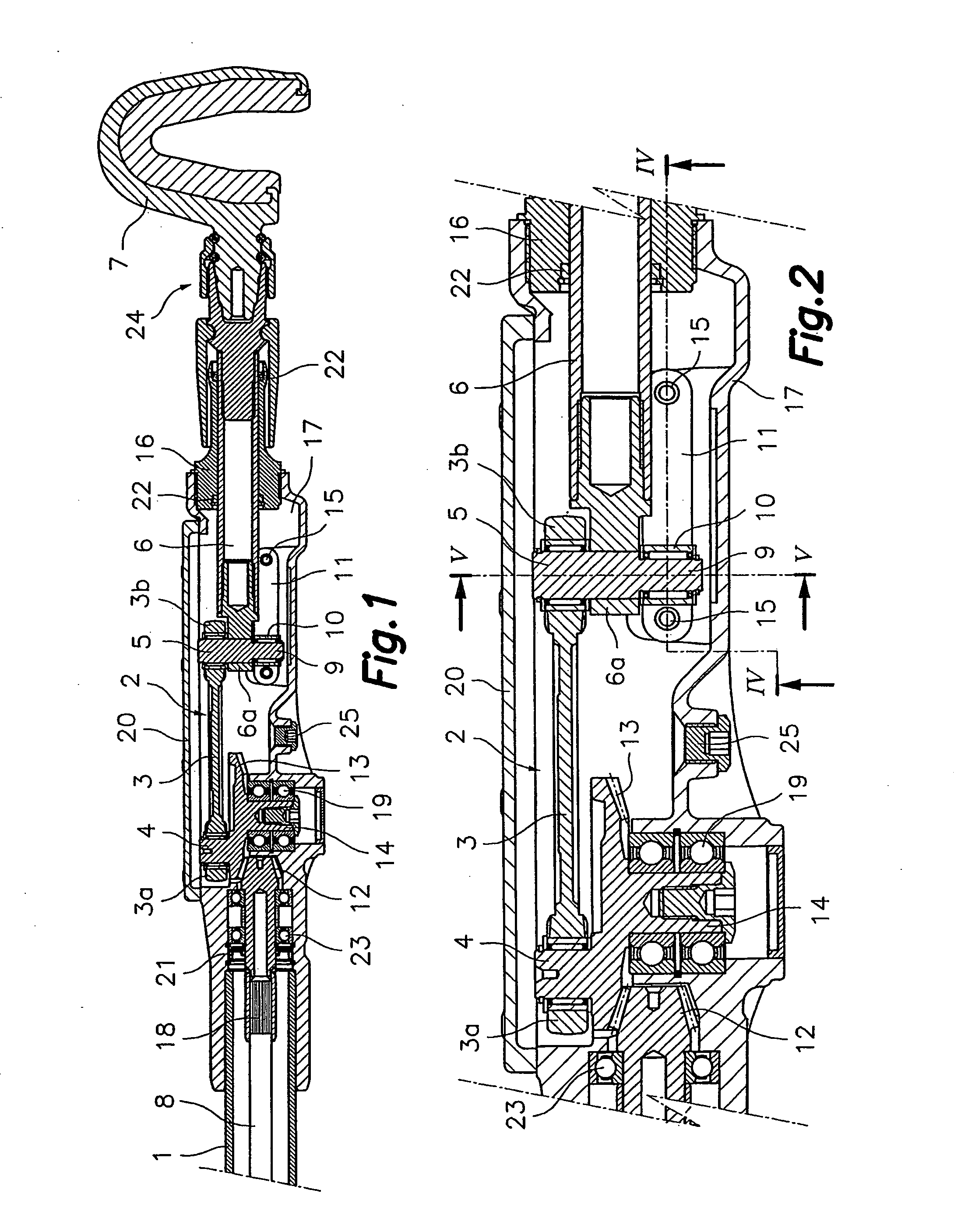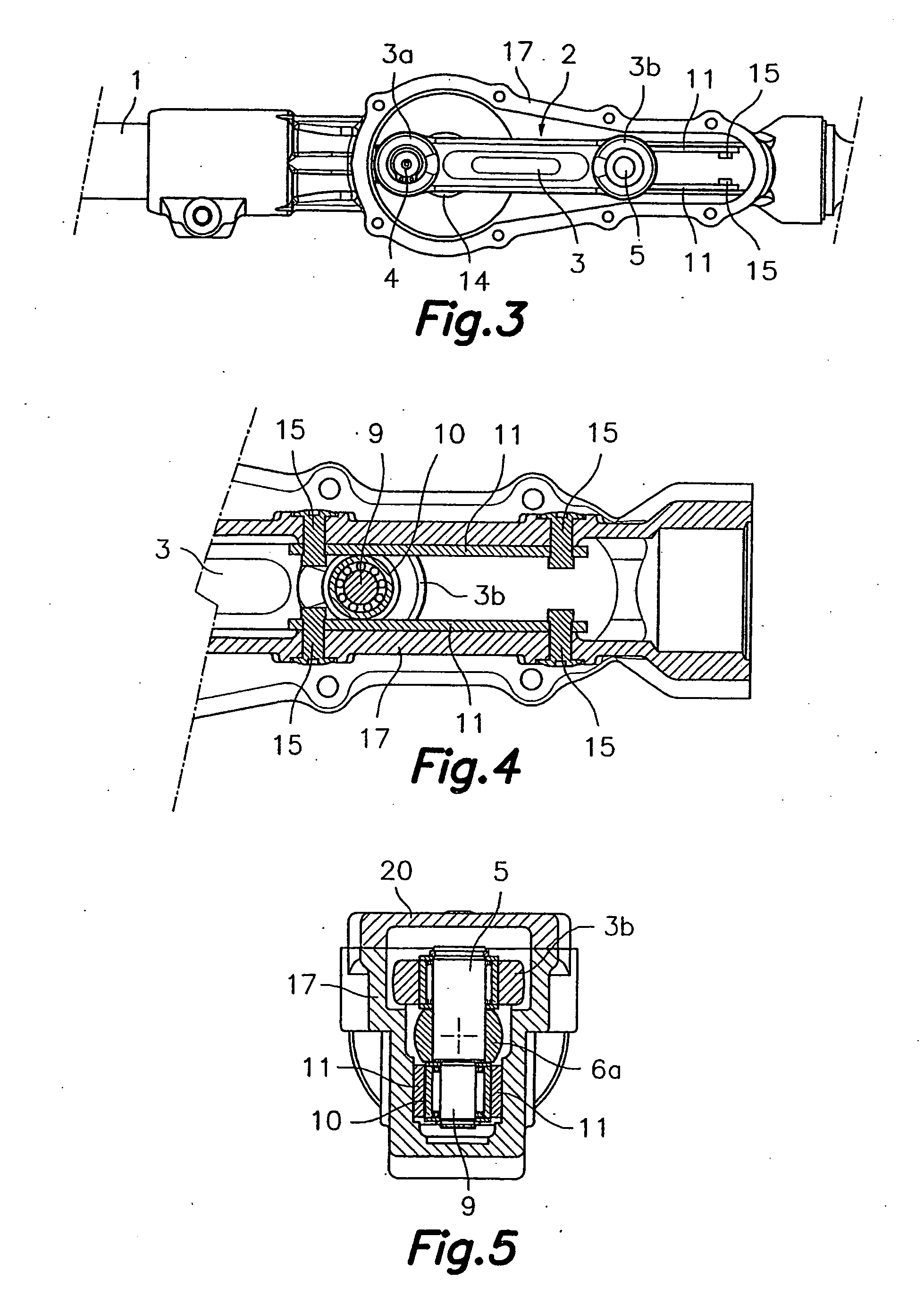Torque-limiting device in a mechanism used to transform a rotational movement into a reciprocating linear movement or vice versa
a technology of torque limitation and rotating force, which is applied in the direction of picking devices, agriculture tools and machines, applications, etc., can solve the problems of reducing the sealing effect, reducing the rotational capacity of the rod, and affecting the sealing effect, so as to reduce the force necessary, reduce the friction, and reduce the radius of limitation
- Summary
- Abstract
- Description
- Claims
- Application Information
AI Technical Summary
Benefits of technology
Problems solved by technology
Method used
Image
Examples
Embodiment Construction
[0019] First referring to FIG. 1, which is a partial representation of a lightweight portable mechanical harvester similar to the one described in the cited document ES-A-1049600, of the same applicant. It must be pointed out, however, that although the device of this invention is very suitable for this type of apparatus, its application is not limited to the same and its description is only provided as an example.
[0020] The apparatus of FIG. 1 is of the type comprising a tubular support 1 containing a rotational movement power shaft 8 coupled by a first end to a rotational power takeoff point or engine (not shown) and by a second end to a vibration producing mechanism 2 that includes a connecting rod 3 that is connected by its head 3a to an eccentric crankpin 4 of a rotating crank and by its base 3b to the end of a mobile element 6 via a hinge pin 5, and which is linearly guided by a guide 16 fixed to a casing 17 of the said vibration-producing mechanism. The distal end of the cit...
PUM
 Login to View More
Login to View More Abstract
Description
Claims
Application Information
 Login to View More
Login to View More - R&D
- Intellectual Property
- Life Sciences
- Materials
- Tech Scout
- Unparalleled Data Quality
- Higher Quality Content
- 60% Fewer Hallucinations
Browse by: Latest US Patents, China's latest patents, Technical Efficacy Thesaurus, Application Domain, Technology Topic, Popular Technical Reports.
© 2025 PatSnap. All rights reserved.Legal|Privacy policy|Modern Slavery Act Transparency Statement|Sitemap|About US| Contact US: help@patsnap.com



